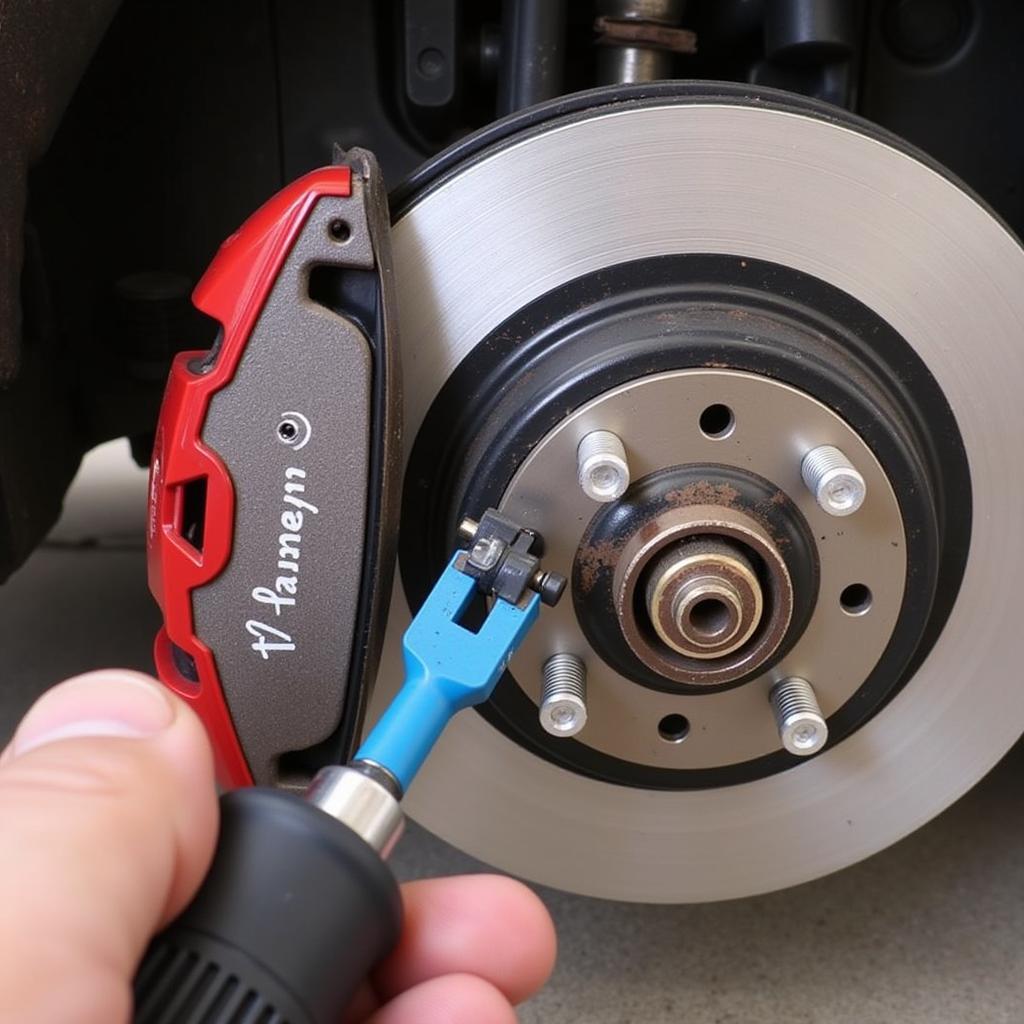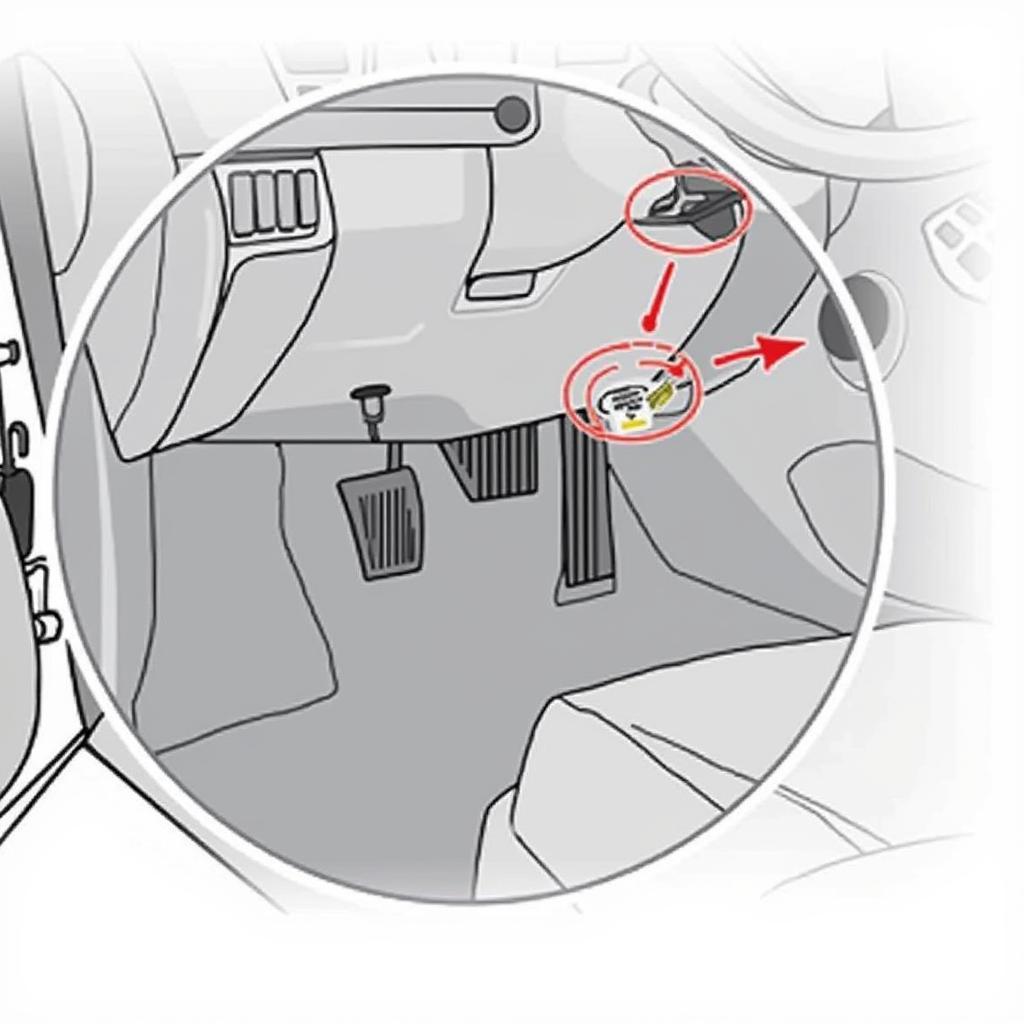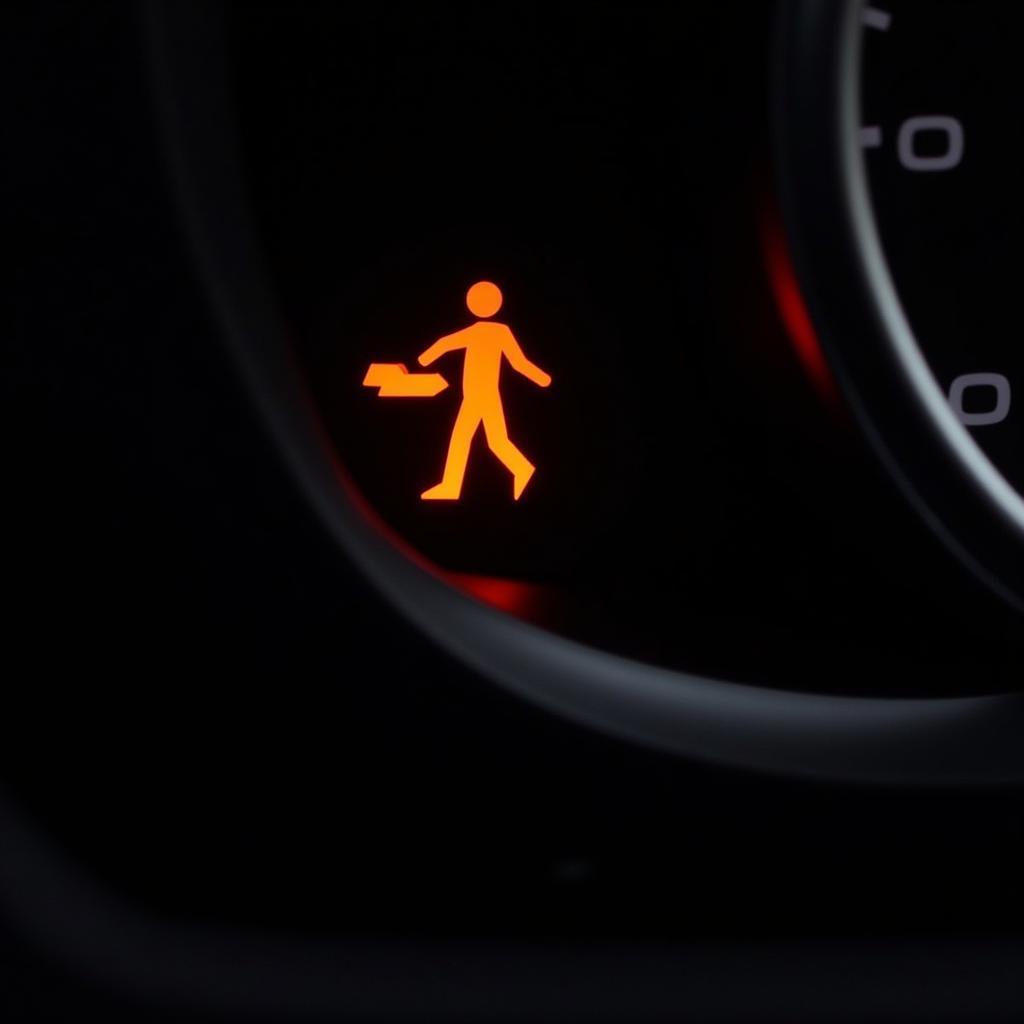The alfa romeo brake pad warning light is a crucial safety feature that alerts you to potential issues with your braking system. Ignoring this warning can lead to costly repairs and compromise your safety on the road. This guide provides in-depth information on understanding, diagnosing, and resolving issues related to the Alfa Romeo brake pad warning light.
If your Alfa Romeo brake pad warning light illuminates, it typically signifies that your brake pads are worn and need replacing. However, other factors can also trigger this warning, including faulty sensors, low brake fluid, or issues with the braking system’s electronics. Contact Here for Free Video Tutorial.
Understanding the specific cause is vital to ensure effective and safe repairs. This article will delve into the common causes, diagnostic procedures, and potential solutions, empowering you to address the issue confidently. This information applies to various Alfa Romeo models, but you might want to check specific information for models like the Stelvio. For example, you can find details regarding the alfa romeo stelvio brake pad warning light.
Modern Alfa Romeos often employ electronic wear sensors embedded within the brake pads. These sensors trigger the warning light when the pad material wears down to a predetermined level, ensuring ample time for replacement before metal-on-metal contact occurs. However, these sensors can sometimes malfunction, triggering the warning light prematurely.
Diagnosing the cause of the illuminated brake pad warning light requires a systematic approach. Begin by visually inspecting your brake pads. Check the thickness of the pad material. If it appears significantly thin or you notice metal-on-metal contact, replacement is necessary.
 Inspecting Alfa Romeo Brake Pads
Inspecting Alfa Romeo Brake Pads
What if the pads look okay? A faulty brake pad wear sensor might be the culprit. These sensors can become damaged or disconnected, leading to a false warning. Checking the sensor’s wiring and connection is a crucial step in the diagnostic process.
Diagnosing the Alfa Romeo Brake Pad Warning Light
The first step is a visual inspection. Look at your brake pads. Are they thin? Do you see any metal? If so, it’s time for new pads. But sometimes, the pads look fine, and the warning light is still on. This can point to a sensor problem.
Checking Brake Fluid Levels
Low brake fluid can also activate the warning light. Check your brake fluid reservoir. If the level is low, it’s essential to top it off with the correct brake fluid specified for your Alfa Romeo model. However, consistently low brake fluid can indicate a leak in the braking system, requiring immediate professional attention.
Electronic Diagnostics for Alfa Romeo Brake Systems
Modern Alfa Romeos incorporate sophisticated electronic systems that control various aspects of the braking system, including the anti-lock braking system (ABS) and electronic stability control (ESC). Issues with these systems can also trigger the brake pad warning light. In such cases, specialized diagnostic equipment is required to pinpoint the specific fault code and guide the repair process. This often involves using specialized software for Alfa Romeo vehicles. If you’re experiencing issues with your Giulietta, you might find our guide on the alfa romeo giulietta brake pad warning light helpful.
Why is my Alfa Romeo brake pad warning light on?
The most common reason is worn brake pads. However, it can also be due to a faulty sensor or low brake fluid.
How do I reset the Alfa Romeo brake pad warning light?
After replacing the brake pads or addressing the underlying issue, the warning light should reset automatically. However, in some cases, a manual reset using diagnostic equipment might be necessary.
“Regular brake system maintenance is crucial for safety,” says automotive expert John Smith, Certified Master Technician. “Don’t ignore warning lights. Addressing them promptly can prevent more serious and costly problems down the line.”
 Replacing Alfa Romeo Brake Pads
Replacing Alfa Romeo Brake Pads
Conclusion
The alfa romeo brake pad warning light serves as a vital safety indicator. Addressing the underlying issue promptly ensures optimal braking performance and safety on the road. While worn brake pads are the most common cause, other factors, including faulty sensors, low brake fluid, and electronic system issues, can also trigger the warning. If you are unsure about diagnosing or resolving the issue, seeking professional assistance from a qualified Alfa Romeo technician is highly recommended. Remember, your safety is paramount. For owners of less common models like the 4C, specific information might be necessary, such as the guide on alfa 4c brake pad warning light.
“Ignoring brake warning lights can be dangerous and expensive,” adds Jane Doe, Lead Diagnostics Specialist at AutoTech Solutions. “Early diagnosis and repair are always the best approach.”
FAQ
- What does the Alfa Romeo brake pad warning light look like? It’s typically a circular symbol with parentheses on either side, resembling worn brake pads. It might be accompanied by a text warning.
- Can I drive with the Alfa Romeo brake pad warning light on? While possible for a short distance, it’s highly discouraged. Continuing to drive with worn pads can damage your rotors and compromise braking performance.
- How much does it cost to replace Alfa Romeo brake pads? The cost varies depending on the model and whether you choose OEM or aftermarket parts.
- How often should I check my Alfa Romeo brake pads? Visual inspections are recommended every few months, or more frequently if you drive in demanding conditions.
- Can I replace Alfa Romeo brake pads myself? If you have mechanical experience, it’s possible. However, if you are unsure, it’s best to consult a professional.
- What type of brake fluid should I use for my Alfa Romeo? Refer to your owner’s manual for the specific type of brake fluid recommended for your model.
- How do I know if my Alfa Romeo brake pad wear sensor is faulty? If your brake pads look fine, but the light is still on, the sensor might be the problem. A professional can diagnose this using diagnostic tools.



